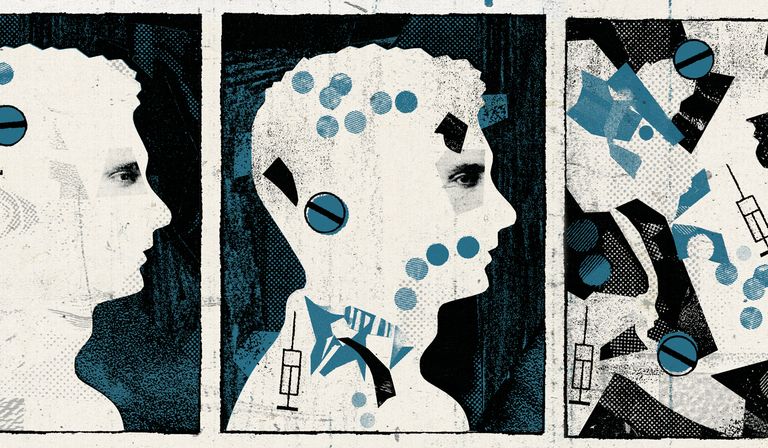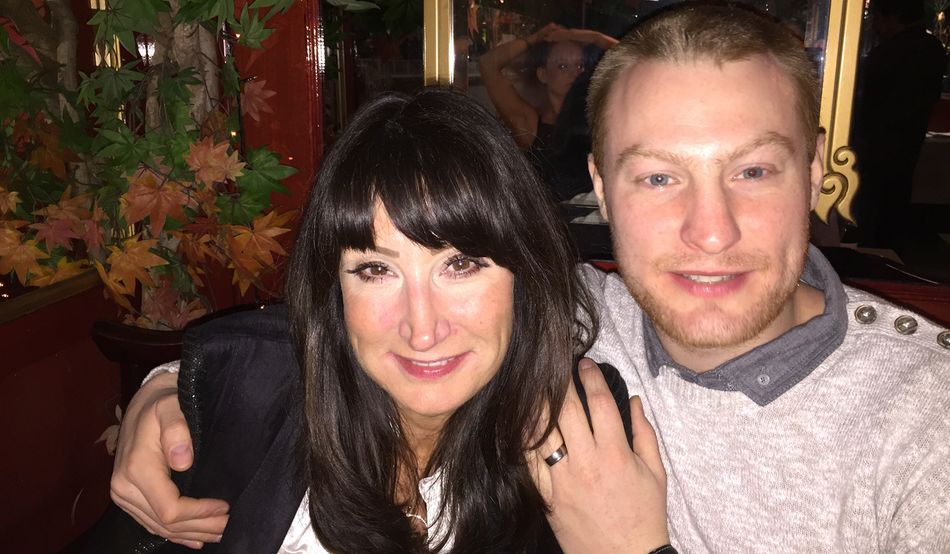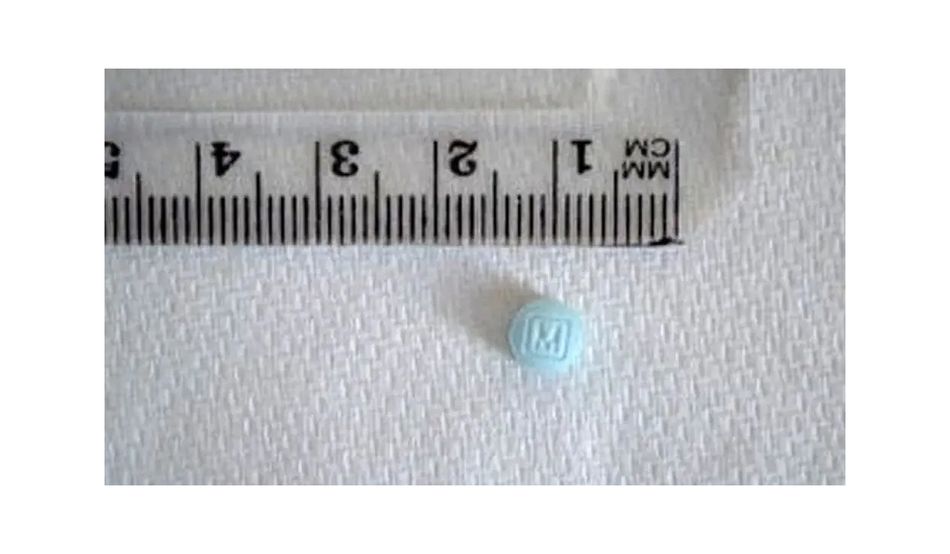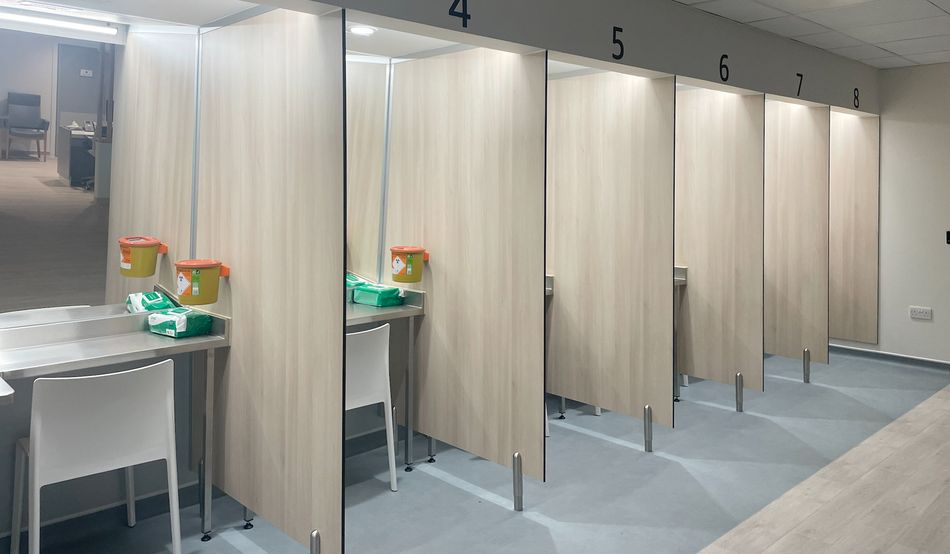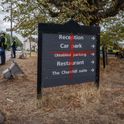The summer of 2016 was an auspicious one for Daniel Cowan; he was sorting things out, for the better.
His marriage had ended, but he had secured a new job and found himself a nice apartment in Edinburgh, near what had been the family home, in Linlithgow, until his parents moved south in 2006. The post was with the Towry financial services company, of which his father was a director, but earned on merit.
In fact, Daniel was like father, like son: Andy Cowan had risen from a working-class Scottish family to the company’s offices in Mayfair, London, and wrote to those interviewing his son: “If Daniel’s not good enough, don’t hire him.”
But Daniel was good enough, and having—as his father had—started out doing menial jobs, his time had come. “He was like his dad,” reflects Andy: “never went to university, worked his way up from jobs in Sainsbury’s and the like—he knew it would come right in the end.” Daniel was 29 years old, and there was cause for celebration.
Daniel, says Andy, “was the kind of lad who would light up a room. He didn’t hug his mother and father, he smothered us in kisses. He was loyal to his old friends, even some who were a bit on the wild side.” Among these was a friend with whom Daniel thought to take some ecstasy—MDMA, procured on the dark web—on a Sunday night, before signing papers on the flat next day. “Which he did very occasionally, the friend more regularly,” says Andy.
Daniel never got to sign the papers, or start the job. When the friend awoke on Monday morning, Daniel was on the couch, unresponsive. The friend tried to resuscitate him—but in vain. Daniel was dead.
For lack of word from her son, and with no reply to her calls, Margaret Cowan asked a friend in Scotland to get her own son to check whether Daniel was at home.
“I was in my office on the Tuesday afternoon,” Andy recalls, at the home he and Margaret share on the Thames reaches near Henley. “And I got a message from my secretary to call the police in Livingstone. I thought: ‘Oh God, what’s he done?’ When they told me Daniel was dead, I left the office quietly and walked across Hyde Park to Paddington like a robot, and took the train home.”
At the funeral, “Everyone turned up. People from the boxing club Daniel had joined, all his friends—except the lad who had got the drugs, who was afraid of the reaction towards him. He died himself, a year later.”
The coroner’s report certified Daniel’s cause of death to have been a mixture of MDMA and heroin, though the Cowans suspect “some kind of synthetic drug. Fentanyl was not mainstream at that time, but we’ve spent the best part of the last eight years convinced that it was a synthetic opioid, something like fentanyl, that killed our son,” says Andy.
As well it might have. Last October, the government’s Office for National Statistics published figures to show narcotics overdose deaths in England and Wales at their highest level since records began in 1993: 5,448 people were killed by illicit drugs in 2023—just over 93 in every million. The calculation excludes Northern Ireland and Scotland, where the proportion of drug deaths—277 per million—is the highest in Europe. The EU counts 22.5 deaths per million.
Annual deaths from now-ubiquitous cocaine in England and Wales are 10 times higher than in 2011, at 1,118. But roughly half the total deaths involved an opioid, and in many cases an opiate. (They are not the same thing: an opiate is derived from the opium poppy, while an opioid is any drug that binds to the opioid receptors in the brain, including drugs that are manufactured synthetically. All opiates are opioids, but not all opioids are opiates.)
Many of these killer opioids are laboratory made. They simulate the effects of heroin but are far more likely to cause overdose, and are mixed in with other drugs, so that people—like Daniel, probably—do not know they are taking them. The most concerning of these for the UK are called nitazenes—known to science as 2-benzyl benzimidazole and piperidinyl benzimidazolone opioids—which come in different strengths.
Some of them, such as metonitazene, are 50 times more likely to cause overdose than heroin and are equivalent to fentanyl, which claimed 73,838 American lives in 2022, and more in previous years. Others, such as etonitazene, are 500 times more likely to cause overdose than heroin, and 10 times more likely than fentanyl. “Tiny amounts of some nitazenes can cause an overdose,” says Adam Holland, one of the chairs of the Royal College of Physicians Faculty of Public Health, and a clinical academic at the University of Bristol.
October’s figures followed the National Crime Agency’s (NCA) annual assessment of serious and organised crime, published last August, which issued “a stark warning that taking drugs has never been more dangerous”.
“The threat from drugs to the UK has increased due to a rise in the production of cocaine, an expanding synthetic drugs market” and an “increase in the availability of synthetic opioids”, it warned. “There has been a significant escalation in the criminal use of nitazenes as a cheap way to increase the strength of certain drugs, particularly heroin.”
According to the assessment, there were “at least 284” deaths linked to high-strength nitazenes during the year from June 2023. But those working in the field fear far higher figures, by reference to the fentanyl crisis in the US. The neuroscientist Graeme Henderson, professor of pharmacology at the University of Bristol, says: “Although we know little about illicit nitazene use so far, we do know a lot about fentanyl use in America, and we can use that modelling.”
“You cannot make direct comparisons between the US and UK,” says Holland, “but if you look at the massive increase in deaths caused by fentanyl, you can get some idea of what synthetic opioids could do here.” Martin Powell, until recently the director of partnerships for the Transform Drugs organisation, says: “We have a potential catastrophe on our hands.”
This assessment is echoed by other authorities. The leading UK expert on synthetic opioids is Caroline Copeland, senior lecturer in pharmacology and toxicology at King’s College London and director of the National Programme on Substance Use Mortality. “The truth is that we just do not know how many people have been killed by synthetic opioids,” she says. “Information from coroners varies across the country. We know that there was a spike in nitazene deaths during summer 2023 [in the West Midlands and South Wales], and we also know that the number is an exponential upward curve. It’s not so much the totals we need to worry about: it’s the speed with which they have risen from zero.”
What are these new drugs, and what do they do? “Opioids activate a receptor in the brain named the µ [mu] receptor—so called after ‘m’ for morphine,” says Henderson. When opioid agonists—a chemical—bind to the receptor, they activate it and produce analgesia (pain relief), but also respiratory depression—normally slow or shallow breathing—and euphoria. Take opioids enough times when you aren’t in pain, Henderson says, “and you become dependent”. Fentanyls and nitazenes do this more effectively than heroin, but at a higher level of potency and addiction.
Many nitazenes are mixed not with heroin but sedatives and painkillers—especially benzodiazepines or “benzos”, of which Xanax and Valium are the best known.
“In practice,” says Holland, the people taking these pills “could be kids who use ‘benzos’ to come down after a festival or dance, or just people buying oxycodone on the internet to help with pain”—or people like Daniel Cowan. “These different groups of people,” says Holland, “are also at risk of nitazenes, as well as people who inject heroin.”
“What really worries me,” says Lydia Plant, director of operations at the Bristol Drugs Project (BDP), “are nitazenes pressed into generic ‘oxy’ pills, painkillers and sedatives. Heroin users often do have a sense of harm reduction awareness, and might get what they are taking checked or tested by us. But these other drugs could be taken by people with no opioid tolerance, buying what looks like legitimate medicine, cellophane-wrapped with dosage notes, probably online. It could be anyone—from a student to someone’s nan—with no idea what’s in the pills.”
In two enactments, the Sunak administration “controlled”—in other words, banned—15 synthetic opioids, 14 of them nitazenes, in February 2024, plus a further six in May that same year. It acted, as is usual, on advice from the Advisory Council on the Misuse of Drugs (ACMD), a multidisciplinary panel of experts in toxicology and treatment, which reported on nitazenes in July 2022. This panel could identify “no legitimate medical uses of 2-benzyl benzimidazole opioids… in the UK or internationally”.
Copeland, who is a member of the full ACMD council, says she is unsure about the government’s preparedness. The UK, she says, is “the sick man of Europe when it comes to drugs. It’s a national trait: look at levels of drunkenness, and the antics of Brits ‘on tour’ abroad. Then apply the same logic to drugs.”
Meanwhile, “Britain is awash with cocaine, barely cut any more. We don’t see, for instance, levamisole, an anti-worming agent, cut into the cocaine as it was 10 years ago. It’s good quality, and the authorities are incapable of stopping it coming in.”
Powell’s view of the government’s response is scathing. “Deaths from heroin in the European Union, across 27 countries, totalled 1,500 last year. Officially the UK had over 2,200 in 2022—but we know that is a very serious undercount. Many drug deaths are wrongly assigned as death by misadventure by coroners. If the EU considers its response inadequate, where does that leave us? These conditions create the potential for a perfect storm.”
Whatever the official response, innovations come from below. Groups of people with trouble in mind collect around the benches in Brunswick Square, Bristol, perhaps to share news and views, stress on the streets, latest wit and wisdom. They’re here because of an open door along the Georgian terrace, where the St Pauls quarter meets the city centre. Through this door, those dependent on dangerous narcotics are received not only with a smile but with efficacy and help of all kinds. This is the Bristol Drugs Project, one of the most established and ambitious institutions of its kind in the UK.
The BDP has existed for four decades, established in response to a heroin crisis during the mid-1980s. Drug users can benefit here from all manner of harm reduction, including sterile needles and safer substitute drugs. The dedicated staff and volunteers have seen it all over time: heroin, crack, recreational psychedelics, the ravages they can wreak, and more. And, recently, a terrifying new arrival of nitazenes.
Powell posits that initiatives like this sprang up during the Conservative austerity years in places such as Bristol and South Wales, where local authorities had “no allegiance to government” and regional police forces were “inclined to think, instead of ‘Thou shalt not’, more like: ‘We won’t get in your way if you do.’” On the frontlines, the priorities are simple: “harm reduction” and saving lives.
In Bristol as elsewhere, one problem is mixed and injected “polydrug” use, mostly combined heroin and crack cocaine, known as a speedball. In response, the BDP’s Lydia Plant speaks impressively about the 1,800 people enrolled in its opiate substitution programme, whereby users and addicts can obtain prescribed methadone or buprenorphine in lieu of street drugs, in a space where “we can check wellbeing, offer a safer substitute drug and preferably offer them healthier life choices in the long run”.
Some users, she says, “just don’t care what they’re taking. But there’s also a level of awareness among many, a self-preservation instinct.” In a backroom, BDP operates a sterile needle dispensary, “and even clean crack pipes, which is technically illegal without a special dispensation,” says Plant. There are new “nitazene strips”, literally “testing strips that you can dip into heroin and it tells you, in safe laboratory conditions, what you’ve got in there, and whether it contains nitazenes”.
And, crucially, there are supplies of naloxone, a lifesaving antidote to opioids. As Henderson explains: “Opiates… bind to the receptor, in an on-off-on manner. They have what we call both affinity and efficacy. Naloxone is an antagonist that binds to the receptor but does not activate it, as it has no efficacy, and so every time the agonist comes off the receptor, naloxone slips in and stays there for enough time to stop the agonist coming back on. The antagonist has very high affinity, and can block the binding of the opioid agonist.”
Last year, soaring drug deaths in San Francisco dropped by a staggering 23 per cent, to 596. “San Francisco public health experts attributed the decline in fatal drug use in the city to the widespread availability of naloxone,” reported the Los Angeles Times.
The BDP’s chief overdose prevention officer, Jake Gazzard, looks as though he plays in a heavy metal band—and he does, in what spare time he has. “My job here,” he says with disarming simplicity, “is to prevent people dying from overdoses.” Which he does, by administering naloxone to people at death’s door. “Every time we’ve given naloxone for an overdose, they’ve survived,” says Gazzard. He has trained 300 police officers to use naloxone, plus “bar staff, hostel staff, receptionists and staff at GP surgeries, charity people”. His work also involves one-on-one counselling: “Look, drugs will always change, batch to batch—there’s no quality control—so I might say to someone, ‘Hey, why not just do half of it, and see how you feel after an hour?’ My view is: do the job. Whatever the day, whatever the drug, stop people dying.”
Cooperation with and from the police is crucial. During a webinar organised by the drug support organisation Barod last October, one speaker was Detective Inspector Carl Evans of Gwent police, who—in contrast to the attitude of many forces around the country—insisted: “The priority is to save lives.” He said that “up to 34” people had died from synthetic opioids in south Wales since June 2023, “some of those in Parc jail”, in Bridgend. Evans discussed “drug-related death awareness” on his force, and its “naloxone rollout” policy, training 324 officers in use of the antidote drug. Evans described its application in detail, saying that “it can be hit and miss”, but his colleagues had used it 18 times, and in each case saved the victim’s life: “18 out of 18—that’s massive, from my perspective,” he said. Evans warned: “Synthetics are not going away any time soon, that is obvious.”
Peter (not his real name), from Cardiff, considers himself lucky to be alive. His story is neither typical nor atypical—it is his own—but many others will recognise it.
Peter, then in his 20s, was drawn to the rave scene during the early 1990s, because it was fun “and a release from the expectations of my parents. Dad was from a mining family up the valleys, first to go to university, and they expected the same. It just wasn’t me.” But neither were the raves or their drug of choice, MDMA. “It was all lovey-dovey, which I enjoyed for a while. Feeling like the crowd was family, hugging, dancing. But”—and he puts this rather well—“I suppose I’m more of a Lou Reed kind of guy than a summer-of-love kind of guy. I wanted something heavier. Someone played me Lou Reed’s song [The Velvet Underground’s “Heroin”], and I thought: this is me.”
After the turn of the millennium, “ecstasy declined, and there were two drugs everywhere around Cardiff and the valleys: cocaine—which was usually crack—and heroin”. Peter drifted in and out of work in a warehouse, a fast-food joint and “boring jobs, for the cash. I started smoking heroin, then injecting it—a friend of mine was fairly way down the line with heroin. I was on smallish doses, but enough to get hooked. It was brilliant, like just this warm feeling like [being] wrapped up in a blanket, even when the weather was shit and work was shit, or it was shit having no work… nothing could get you, nothing could harm you”.
For a surprisingly long time, Peter was able to combine his habit with enough work “to pay rent and buy drugs. I could function enough for my boss not to notice”. Peter’s mother—who had outlived his father—did notice, however, tipped off by his brother. “She gave me hell for it, and I gave it back, so that was goodbye family.”
Things started to go wrong about eight years ago, when Peter started doing “one of each”—heroin and crack. “Most junkies were doing it, because you got the blanket and a kick at the same time. Best of both worlds. But I stopped getting up in the morning, couldn’t pay rent, so the guy I was sharing a flat with threw me out.” As he describes this, in Stevenage where he now lives, Peter’s stare fixes on the floor, and stays there. He drifted from shelter to bench, bench to friends’ floors, and back to the bench. “When Covid happened, people went to Swansea because they could score there. By then I was half gone.”
In autumn 2022, in Swansea, Peter took his last shot of heroin—the one that should have killed him. “In a kind of little wood, near the city centre—we called it the ‘junkie jungle’. For the first [and only] time, I’d broken into a car, to steal a leather jacket, to sell and buy more gear. I was just looking for money to buy drugs, nothing else. I shot up, and next thing I knew, I woke up in an ambulance, with a paramedic looking down at me.”
The scrap of woodland happens to be near Swansea’s central police station, which has been part of a pilot programme using naloxone since 2021. A couple walking past Peter’s unconscious body called a helpline, and the intranasal spray was administered by a volunteer from a drug support centre, with a police officer present.
“That was it for me,” says Peter, “I learned my lesson.” An aunt who had always liked him paid for him to enter a residential rehabilitation programme in Wales. He moved to Stevenage afterwards, “though I prefer Welsh people, to get away from it all, and start again”. Which he did, now working at a coffee joint, where he makes a damned good cappuccino.
“People will make their own choices,” Peter says. But “it just makes no sense not to have naloxone everywhere. It saved my life, and it should save other people”. The biggest police force in the country, the Metropolitan Police, says it has “begun working with partners to carefully consider whether frontline officers should be equipped with naloxone, however there is no pilot site identified at this time”.
Scotland, where Daniel Cowan died, counts drug deaths separately. With a population of only 5.5m, it recorded 1,130 in the year to September 2024, Europe’s highest per capita. The figure is down on most years over the past decade but more than four times the level recorded in 2000. Reporting figures for 2023, the National Records of Scotland noted: “The association of deprivation with drug misuse deaths is much greater than with other causes of death.”
This is the backdrop to perhaps the boldest endeavour to date in British drug treatment. A nondescript, single-storey NHS building on Hunter Street, where the eastern city centre of Glasgow meets Gallowgate, made history in January by opening as the UK’s first safer drugs consumption facility. Here, people who use drugs would be able to inject them in designated spaces, supervised by medically trained staff.
The initiative was spawned after a groundbreaking NHS report eight years ago entitled “Taking Away the Chaos”, which described a bleak landscape of heroin addiction and public injection in Glasgow city centre, and recommended an enlightened policy overhaul, including, indirectly, this facility.
Saket Priyadarshi is associate medical director of alcohol and drug recovery services at NHS Greater Glasgow and Clyde, and among the driving forces behind the report and now the project. In conversation, he finds the deep roots of the problem in “significant social deprivation” during the -deindustrialisation of Glasgow and shipyard closures. “Heroin arrived into a postindustrial landscape, on sink estates—an extreme version of what was happening elsewhere in the UK and in Dublin.” With it came further health issues: “HIV, anthrax, botulism.” Public injection “has since become a serious issue—people injecting in car parks, back alleys, public toilets. We hear of people going to work in the morning or taking the kids to school past the debris of public injection”.
The facility has four principles, says Priyadarshi: “Reduction in harm to people who use these drugs; recovery opportunities; improving the social surroundings; and cost-benefit analysis for wider society.” He adds: “I’m a doctor. I want to get away from the culture war aspect of all this and focus on a way which is both humane and scientific—medically evidence-based. And that starts with offering these individuals a warm, safe place to use what they use in a less risky way, with staff available to help them if anything should happen, and if they need our services.”
Priyadarshi adds that other options, such as methadone and diamorphine, are on offer, as in Bristol. “We would want to help people to begin improving their health and their lives. However, we know that much of this is longstanding use, and for some people the road to recovery will take a long time.”
“Nitazenes are here,” he says, but in contrast to parts of England and Wales, “their presence is relatively low for now”. But he is wary: “We know that the trends change rapidly, and we have to be prepared.” Here, as in Bristol, the main problem is mixed, polydrug use, “heroin and cocaine, or cocaine and street benzodiazepines”.
The delicacy in this enterprise has been the “legal framework”: how to operate such an institution, which welcomes and helps people carrying class A drugs, possession of which is illegal. The Lord Advocate of Scotland, Dorothy Bain, let it be known that what Priyadarshi calls “a degree of tolerance” was forthcoming, negotiated with the Crown Office and Glasgow division of Police Scotland.
Upon the facility’s opening, the Lord Advocate confirmed that the authorities would operate “a prosecution policy that it would not be in the public interest to prosecute drug users for simple possession offences committed within a pilot safer drugs consumption facility”. Arresting people for possession within the facility “simply would not work”, says Priyadarshi, “as no one would then use the service [and the police know that]. This is for society, as well as for the users. This is for all of us.”
The NCA declined to put forward an officer for interview for this article, but sent a statement from its deputy director, Charles Yates. He said: “The National Crime Agency has prioritised the operational response to synthetic opioids across the UK... We are working with Border Force, Home Office Intelligence and international partners to prevent illegal substances entering the UK, and we collaborate with police forces and regional organised crime units to arrest people responsible for the supply of these drugs… The NCA has identified hotspots of nitazenes in the UK, which has enabled activity to be focused and all lines of enquiry pursued. As a result of the work undertaken by UK law enforcement, HMG and health partners, currently the rate of nitazene drug-related deaths remains stable, but the threat of a significant increase remains very real—so our focus remains constant.” Pertinent to Daniel Cowan’s death, Yates added: “While a significant proportion of nitazenes detected have been used to fortify heroin, we have also identified nitazenes in other drugs including products purporting to be benzodiazepines.”
Then comes a fascinating line, echoing Powell’s point, to suggest that the UK is not just importing, but has become a global hub for nitazene-mixed narcotics: “The UK is a destination for nitazenes manufactured in places with large chemical manufacturing industries, such as China, but it is not always the final destination. Nitazenes are being trafficked from the UK to New Zealand, Australia and the US, as well as into the UK using fast parcel, post and Royal Mail services. We have no evidence to indicate they are being manufactured in the UK.”
For the NCA, as per its assessment last August: “Illegal drugs are a key driver of serious and organised crime that blights communities across the UK, putting people in harm’s way, and at risk of violence on the streets from the criminal gangs involved.” The priority—among others—is to break those gangs.
There was one significant series of raids in the north London boroughs of Enfield and Waltham Forest in August 2023. And a major haul: 150,000 nitazene tablets plus other class A and B drugs, a gun, a pill-pressing machine, more than £60,000 in cash and £8,000 in cryptocurrency stored on hard drives. Eleven people were arrested between August and November 2023, and charged with drug smuggling and related offences; they were remanded in custody at Kingston crown court on 20th December, mostly Polish and other east European nationals, all based in north London and allegedly smuggling, pressing and dealing these killer drugs.
Along with the bans, the government has formed a Synthetic Opioids Taskforce, assigned to “oversee and coordinate the government’s strategic response to the threat to the UK posed by synthetic opioids”. In parallel, the NCA launched Project Housebuilder “to lead and coordinate the law enforcement and public health response to the increased threat posed by nitazenes”. We now wait to see whether and how the Labour government will retain or reform the UK’s longstanding version of its “war on drugs”. One clue is that Diana Johnson, who chaired a home affairs select committee that recommended reforms, is now the minister of state for crime, policing and fire.
Andy and Margaret Cowan seek a different kind of solution. “You think life is finished, and there’s no future,” says Andy. “But of course it isn’t, and there is.” He retired from the firm to care for Margaret and focus on family, recovered from his own low period, and takes long, meditative walks from an apartment they own in Nice, in France. As importantly, the Cowans want to turn their son’s death to the good, working alongside an organisation called Anyone’s Child, which seeks to reform the way drugs are regarded and confronted by society. And to work with “families that are going through the same thing as us,” says Margaret. “It can break families, many of whom do not have the financial security we do.”
“Society is infused with drug-taking,” says Andy. “It’s not going away. Our son was not an addict—he was a young lad with career prospects who loved his family, and wanted a party with friends. Drug addiction is the tip of the iceberg: if the supply is poisoned, it’s going to get everyone—the non-addicts as well.
“We meet people who say, ‘If you take drugs, you get what you deserve.’ Is that the society we want to live in? What we need is a compassionate response, not a judgemental one. We need a situation where drugs are legal and regulated, to make them safer. I’m not advocating a free-for-all, and I know there’ll always be a black market. But what we have is a 100 per cent black market, and the only people who stand to gain are the criminal cartels. Young people who think they’re going to a nice party are going like lambs to the slaughter. We have to do all we can to make these things as safe as possible. Drug deaths are going up, and we’re going to have more young people like Daniel. We need to stop the deaths, and stop parents going through what we’re going through.”
Holland cautions that synthetic opioids are not the end of the line. “Of all the new drugs, nitazenes present the biggest risk. But they are not the beginning of the story, and they won’t be the end. Between 1997 and 2021, more than 860 psychoactive substances were introduced into the European drugs market,” he says. “New drugs are constantly emerging. This is not going to go away, and the challenge is… to prevent harm and save lives.” The ACMD warned in its report that “specifically listing currently identified variants for control is the simpler approach, but risks being overtaken in the future by the development of further variants”.
If killer synthetic opioids in the UK are set to follow fentanyl in the US, that raises the question, from the mafia’s point of view: what’s the point of a dead customer? What kind of business model is that? An answer I got in rustbelt America, regarding fentanyl, was depressing in the extreme: “The profit margins are so high, it doesn’t matter. And for every one person that dies, there are 10 more in line to replace them.”
“Organised crime,” says Copeland, “is not too worried about customer feedback. People will pay for heroin, people will pay for cocaine—and the criminals are not looking out for their views on a Trustpilot survey.”
